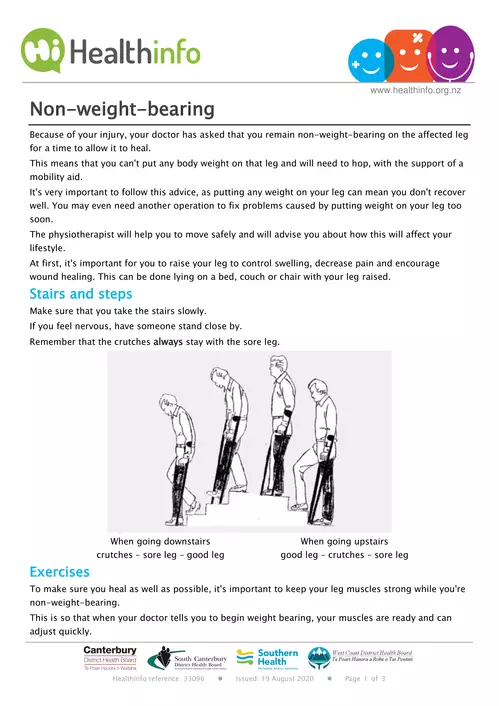
Non-weight-bearing - HealthInfo Canterbury
These exercises may be a bit uncomfortable, but if you get any specific pain, you should stop the exercise. Static quad. ? Squash your knee hard down into
adsPart of the document
Non-weight-bearing
Because of your injury, your doctor has asked that you remain non-weight-bearing on the affected leg
for a time to allow it to heal.
This means that you can't put any body weight on that leg and will need to hop, with the support of a
mobility aid.
It's very important to follow this advice, as putting any weight on your leg can mean you don't recover
well. You may even need another operation to fix problems caused by putting weight on your leg too
soon.
The physiotherapist will help you to move safely and will advise you about how this will affect your
lifestyle.
At first, it's important for you to raise your leg to control swelling, decrease pain and encourage
wound healing. This can be done lying on a bed, couch or chair with your leg raised.
Stairs and steps
Make sure that you take the stairs slowly.
If you feel nervous, have someone stand close by.
Remember that the crutches always stay with the sore leg.
When going downstairs When going upstairs
crutches sore leg good leg good leg crutches sore leg
Exercises
To make sure you heal as well as possible, it's important to keep your leg muscles strong while you're
non-weight-bearing.
This is so that when your doctor tells you to begin weight bearing, your muscles are ready and can
adjust quickly.


